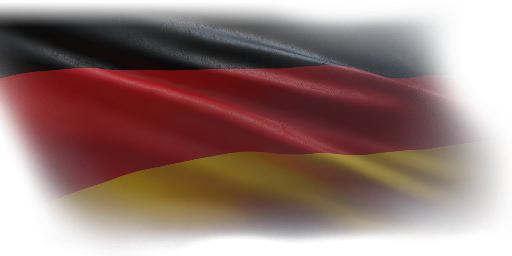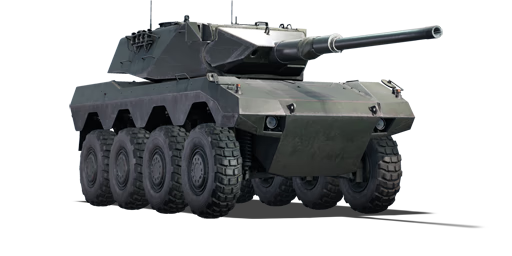




The Radkampfwagen 90, also known as the Radpanzer 90, is an eight-wheeled combat vehicle prototype created by Daimler-Benz at the request of the German Federal Ministry of Defence. In the early 1980s, the German Federal Ministry of Defence tasked Daimler-Benz with building an armoured wheeled combat vehicle in response to the success of other countries' wheeled armoured vehicles, such as the French AMX-10RC. The combat weight was to be around 30 tonnes. In late 1983, Daimler-Benz began developing and manufacturing what was formerly known as the "Wheeled Demonstration Vehicle" and then the "Wheeled Experimental Vehicle (88)". The vehicle was ultimately designated "Radkampfwagen 90". The prototype was finished in 1986. Due to budget cuts and a deteriorating defense market, the Radkampfwagen 90 was never developed beyond the prototype stage. However, the test results were incorporated into the investigations conducted as part of the experimental program "Test Carrier Armored Transport Vehicle with Integrated Overall Protection," which later developed into the GTK Boxer armoured fighting vehicle. The prototype is now displayed in Germany's Wehrtechnische Studiensammlung (Defense Technology Study Collection) in Koblenz. The turret is a prototype version of the Leopard 2 main battle tank's.
Introduced in Update 1.97 "Viking Fury", the Radkampfwagen 90 is a lightning-fast, heavy-hitting armoured wheeled vehicle for German Army ground forces. The Radkampfwagen 90 is armed with the well-known 105 mm Royal Ordnance L7A3 tank gun and has access to an assortment of ammunition for various situations. The Radkampfwagen 90, with a top speed of more than 100 km/h, is a dangerous flanking vehicle in the right hands. However, it lacks thermal imaging equipment, which is featured in several other tanks of its rank. It is most likely given that the Radkampfwagen 90 is still in the prototype stage. Nonetheless, with a two-plane fully automatic stabilization system and a laser rangefinder, the Radkampfwagen 90 can undoubtedly deliver devastating blows to the adversary if used to its full potential.
| Ammunition | Type | Armor penetration (mm) at a distance: | |||||
|---|---|---|---|---|---|---|---|
| 10 m | 100 m | 500 m | 1000 m | 1500 m | 2000 m | ||
| HEATFS | 400 | 400 | 400 | 400 | 400 | 400 | |
| HESH | 127 | 127 | 127 | 127 | 127 | 127 | |
| APFSDS | 338 | 336 | 330 | 323 | 315 | 307 | |
| APFSDS | 421 | 419 | 411 | 401 | 391 | 381 | |
| Belt | Belt filling | Armor penetration (mm) at a distance: | |||||
|---|---|---|---|---|---|---|---|
| 10 m | 100 m | 500 m | 1000 m | 1500 m | 2000 m | ||
| AP/T | 13 | 12 | 7 | 3 | 2 | 0 | |












Mobility | |
|---|---|
Protection |
|---|
Firepower | ||
|---|---|---|